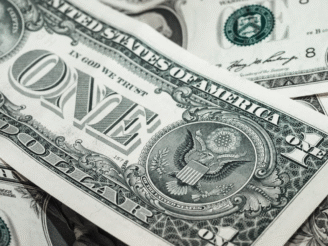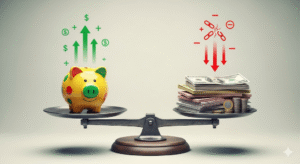Dividend investing: what is it, what is it for and what are the benefits?
Discover the power of dividend investing: learn what it is, how it works, and the benefits it offers for building passive income.
Understand about dividend investing

If you are looking for a way to generate passive income and build long-term wealth, dividend investing can be an excellent strategy, especially if you live in the United States, where this model is quite popular and consolidated.
But what are dividends, how do they work, and why do so many investors choose this path? Keep reading until the end for more details!
What is dividend investing?
Dividend investing means buying shares in companies that distribute part of their profits to shareholders on a regular basis.
These payments are called “dividends” and can be monthly, quarterly, semi-annual or annual, depending on the company’s policy.
In the United States, it is common to find companies with a solid history of paying dividends, even for decades in a row.
These companies are part of groups such as the Dividend Aristocrats, which are companies in the S&P 500 index that have increased their dividends for at least 25 years in a row.
What is this type of investment for?
Dividend investing basically serves two purposes. Below, we detail each of them in more detail so you can stay up to date!
- Generating passive income: dividends work as a source of recurring income. For investors seeking financial freedom or a more comfortable retirement, periodic payments can complement or even replace their salary over time;
- Reinvestment and wealth growth: many investors choose to reinvest the dividends received by buying more shares. This allows their wealth to grow exponentially thanks to compound interest, which is known as the “snowball effect”.
What are the benefits of dividend investing?
Income predictability
Unlike stocks focused on appreciation, investments in companies that pay dividends tend to offer more stability.
Companies that maintain a solid profit distribution policy typically have robust cash flow and well-established business models.
Resilience in times of crisis
During periods of economic uncertainty, such as recessions or market declines, stocks of dividend-paying companies generally suffer less than growth stocks. This is because they tend to attract more conservative investors, who seek stability and income.
Strategic reinvestment
In the US, many investors use so-called DRIPs (Dividend Reinvestment Plans), automatic dividend reinvestment plans.
With them, the dividends received are used directly to buy new shares of the same company, without brokerage fees, accelerating the growth of the portfolio.
Tax advantages
In the United States, qualified dividends are taxed at lower rates than ordinary income, which can be an advantage for investors.
In addition, accounts such as Roth IRAs and 401(k) allow for tax-free investment growth, depending on the type and rules of the account.
Discipline and long term focus
Dividend investing often encourages a long-term mindset. Since earnings come over time and consistently, this type of strategy helps investors avoid making rash decisions based on emotions or short-term fluctuations.
Practical example: how do dividends work in practice?
Suppose you bought 100 shares of a U.S. company that pays $1 per share per year in dividends. This means you will receive $100 per year (or $25 per quarter, if payments are made quarterly).
If you reinvest that money into more stocks, you can increase your number of assets, and therefore the amount of dividends you receive in the future.
Now imagine doing this for 10, 20, or 30 years. The power of compound interest and continued reinvestment can turn small amounts into a solid, growing income.
How to start investing in dividends in the US?
There are several brokerages in the United States that facilitate access to dividend-paying stocks. Some popular options are Charles Schwab, Fidelity, TD Ameritrade, and digital platforms such as Robinhood and M1 Finance.
In addition, prioritize companies with a good history of paying dividends, such as Coca-Cola, Johnson & Johnson, Procter & Gamble, and others on the Dividend Aristocrats or Dividend Kings lists.
The dividend yield is the percentage that the company pays in dividends in relation to the share price. But be careful: very high yields can be a sign of risk, especially if the company is facing difficulties.
Finally, invest in different sectors to reduce risk. You can also use ETFs focused on dividends, such as the Vanguard Dividend Appreciation ETF (VIG) or the Schwab U.S. Dividend Equity ETF (SCHD).
Dividend investing in the United States is a solid and accessible strategy, especially for those looking to build passive income and long-term financial stability.
With planning, discipline, and a focus on reliable companies, it is possible to turn dividends into a true source of financial freedom.






